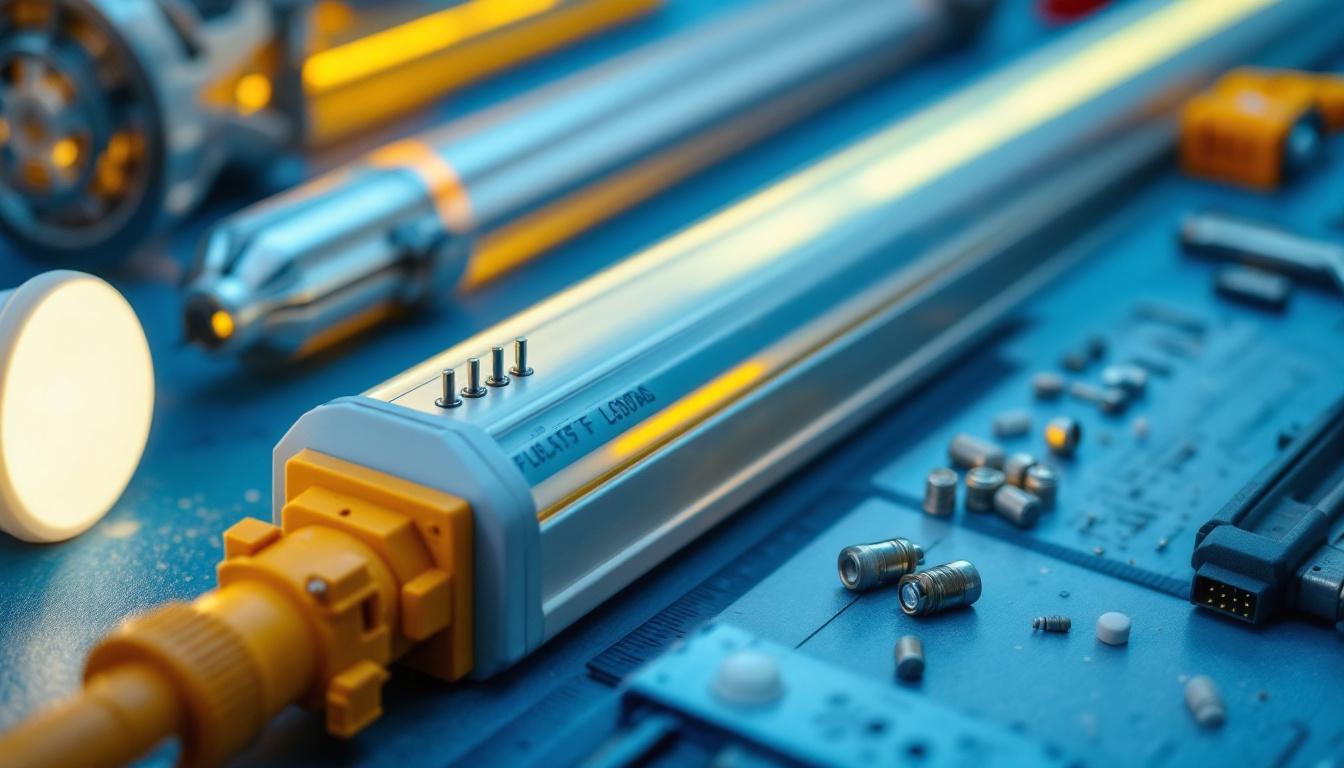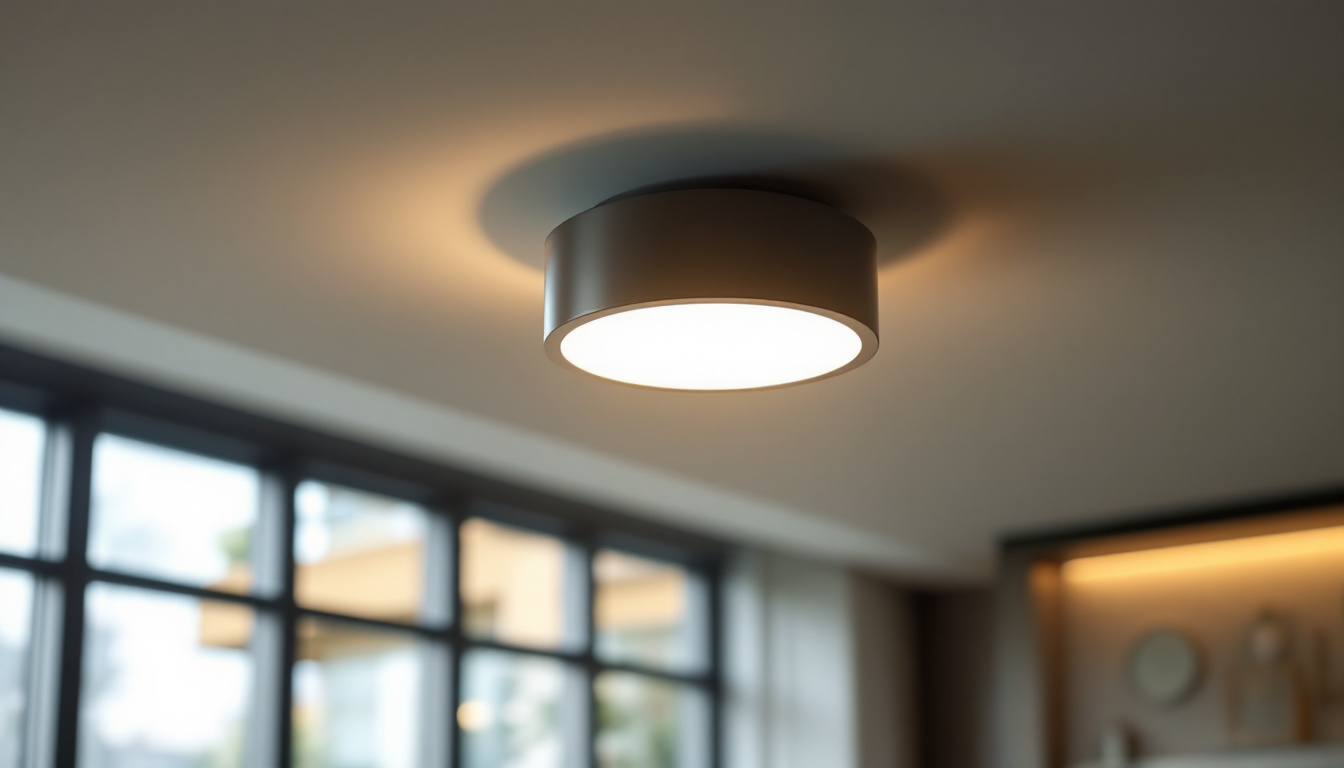
In the world of lighting, the term “ballast” often comes up, particularly when discussing fluorescent lighting systems. For lighting contractors, understanding the function and importance of a fluorescent ballast is crucial. This article delves into what a fluorescent ballast does, its significance in lighting installations, and why contractors must be well-versed in its operation and maintenance.
A fluorescent ballast is an essential component in fluorescent lighting systems. Its primary function is to regulate the current flowing through the lamp. Without a ballast, the lamp would draw too much current, leading to overheating and eventual failure. Essentially, the ballast acts as a stabilizer, ensuring that the lamp operates within its designed parameters.
There are two main types of ballasts: magnetic and electronic. Magnetic ballasts use electromagnetic induction to control the current, while electronic ballasts use electronic circuits to achieve the same goal. Each type has its own advantages and disadvantages, which can influence a contractor’s choice depending on the specific application. For instance, magnetic ballasts are often more robust and reliable in harsh environments, but they tend to be heavier and less energy-efficient than their electronic counterparts. On the other hand, electronic ballasts are lighter and can provide more precise control over the lighting, making them ideal for applications where energy efficiency and light quality are paramount.
The operation of a fluorescent ballast can be broken down into several key functions. Initially, when the light is turned on, the ballast provides a high voltage to ignite the gas within the lamp. This ignition process is crucial, as it allows the lamp to start emitting light. Once the lamp is lit, the ballast reduces the current to a safe operating level.
In electronic ballasts, this process is more efficient. They can provide a more stable light output and often include features such as dimming capabilities and improved energy efficiency. Understanding these operational differences is vital for contractors when selecting the appropriate ballast for a specific lighting system. Additionally, electronic ballasts can operate at a higher frequency than magnetic ballasts, which not only enhances the quality of light emitted but also reduces flickering, a common complaint with traditional fluorescent lighting. This flicker-free operation is particularly beneficial in environments where visual comfort is essential, such as offices, schools, and hospitals.
Moreover, the choice of ballast can significantly impact the overall energy consumption of a lighting system. With rising energy costs and increasing environmental concerns, many businesses are now opting for electronic ballasts due to their ability to reduce energy usage by up to 30%. This not only leads to lower utility bills but also contributes to a smaller carbon footprint. As more facilities aim for sustainability certifications, the role of efficient lighting solutions, including the right ballast, becomes increasingly important in achieving these goals.
One of the most significant advantages of using fluorescent ballasts, particularly electronic ones, is their energy efficiency. By regulating the current and minimizing energy waste, these ballasts can lead to substantial cost savings for both contractors and end-users. This efficiency is especially important in commercial settings, where lighting can account for a significant portion of energy consumption.
Contractors who prioritize energy-efficient solutions can offer their clients better long-term savings. This not only enhances customer satisfaction but also positions the contractor as a knowledgeable professional in the field. Understanding the energy implications of different ballast types can be a valuable selling point. Additionally, many utility companies offer rebates or incentives for the installation of energy-efficient lighting systems, which can further reduce initial costs and encourage clients to make the switch. By staying informed about these programs, contractors can provide clients with comprehensive financial benefits, making the transition to fluorescent lighting even more appealing.
The quality of light produced by fluorescent lamps can be heavily influenced by the type of ballast used. Electronic ballasts, for instance, tend to provide a more consistent light output with less flickering compared to their magnetic counterparts. This consistency is crucial in environments where lighting quality affects productivity, such as offices and retail spaces.
For lighting contractors, recommending the right ballast can lead to improved lighting conditions and greater client satisfaction. A well-informed contractor can explain the benefits of using high-quality ballasts to clients, ultimately enhancing the overall lighting experience. Furthermore, the color rendering index (CRI) of fluorescent lights can also be affected by the ballast type. Higher CRI values mean that colors appear more vibrant and true to life, which is particularly important in settings like art galleries or fashion stores where accurate color representation is essential. By educating clients about these nuances, contractors can help them make informed decisions that align with their specific needs.
In many regions, there are regulations and standards governing energy efficiency and lighting quality. Understanding the role of fluorescent ballasts in meeting these standards is essential for contractors. Using compliant ballasts not only ensures that installations meet legal requirements but also helps avoid potential fines or rework.
Staying updated on local regulations regarding lighting can give contractors a competitive edge. By being proactive in compliance, contractors can build trust with clients and establish themselves as reliable professionals in the lighting industry. Additionally, many jurisdictions are increasingly adopting stricter energy codes, which can affect the types of ballasts that can be used in new installations. By keeping abreast of these changes, contractors can not only ensure compliance but also position themselves as leaders in sustainable practices. This proactive approach can lead to opportunities for contractors to participate in community initiatives or educational programs, further enhancing their reputation and client relationships.
Selecting the appropriate ballast for a specific project involves several considerations. First and foremost, contractors need to assess the type of fluorescent lamps being used. Different lamps require different ballast specifications, including wattage and voltage ratings.
Additionally, the intended use of the lighting system plays a significant role in ballast selection. For instance, a commercial space may benefit from the energy-saving features of an electronic ballast, while a more budget-conscious project might lean towards a magnetic ballast. Understanding these nuances is key for contractors to make informed recommendations.
Proper installation of fluorescent ballasts is crucial for optimal performance. Contractors must ensure that the ballast is compatible with the lamp and that all connections are secure. Incorrect installation can lead to flickering, reduced lifespan of the lamp, and even potential safety hazards.
Regular maintenance is also important. Over time, ballasts can wear out or become less efficient. Contractors should educate clients on the signs of a failing ballast, such as flickering lights or buzzing sounds, and recommend timely replacements to maintain lighting quality and energy efficiency.
Fluorescent ballasts can encounter various issues that may affect their performance. One common problem is overheating, which can be caused by poor ventilation or an incompatible ballast. This overheating can lead to premature failure of both the ballast and the lamp.
Another issue is flickering lights, often indicative of a failing ballast. This can be particularly frustrating in commercial settings, where consistent lighting is essential. Contractors should be equipped to diagnose these problems quickly and efficiently, ensuring minimal disruption to the client’s operations.
When a ballast fails, contractors need to be prepared for replacement. This involves not only selecting the right replacement ballast but also ensuring that the installation is performed correctly. Upgrading to a more efficient ballast can also be a worthwhile consideration, especially in older systems where energy efficiency may be lacking.
Contractors can use this opportunity to discuss the benefits of newer technologies with clients, such as the advantages of electronic ballasts over magnetic ones. This proactive approach can enhance the contractor-client relationship and lead to future business opportunities.
The lighting industry is continually evolving, with advancements in technology leading to more energy-efficient solutions. Electronic ballasts are becoming increasingly sophisticated, offering features such as smart controls and integration with building management systems. These advancements not only improve energy efficiency but also enhance user experience.
Lighting contractors should stay informed about these trends to provide clients with the most up-to-date solutions. By embracing new technologies, contractors can position themselves as leaders in the industry and offer clients innovative options that meet their needs.
As LED technology continues to gain popularity, understanding how fluorescent ballasts interact with LED systems is becoming increasingly important. While traditional fluorescent ballasts are not compatible with LED lamps, many manufacturers now offer LED-compatible ballasts or retrofit solutions.
Contractors who are knowledgeable about these options can help clients transition from fluorescent to LED lighting seamlessly. This not only enhances the contractor’s reputation but also contributes to the overall sustainability of the lighting industry.
In conclusion, the role of fluorescent ballasts in lighting systems cannot be overstated. For lighting contractors, understanding the function, importance, and technology behind these components is essential for providing high-quality installations and services. From energy efficiency and lighting quality to compliance with regulations, the knowledge of ballasts can significantly impact a contractor’s success.
As the industry continues to evolve, staying informed about advancements and trends will enable contractors to offer their clients the best solutions available. By prioritizing education and expertise in fluorescent ballasts, lighting contractors can enhance their services, build trust with clients, and ultimately contribute to a more efficient and effective lighting landscape.
Ready to elevate your lighting projects with the best fluorescent ballasts on the market? Look no further than LumenWholesale, where we provide lighting contractors with the highest quality, spec-grade lighting products at unbeatable wholesale prices. Say goodbye to inflated markups and hello to superior lighting solutions that meet the highest industry standards. Plus, with free shipping on bulk orders, you can stock up on reliable, high-performance lighting without any hidden fees. Don’t compromise on quality or value—choose LumenWholesale for a seamless blend of affordability and convenience. Visit us now at Wholesale Lighting at the Best Value and take the first step towards a brighter, more efficient lighting future.

Discover why staying informed about the latest solar post lights is crucial for lighting contractors.

Discover expert insights and practical tips for lighting contractors on selecting and installing round ceiling lights.

Discover the essentials of canopy lighting with our comprehensive guide tailored for lighting contractors.

Discover expert tips and insights on selecting and installing flush light fixtures for lighting contractors.